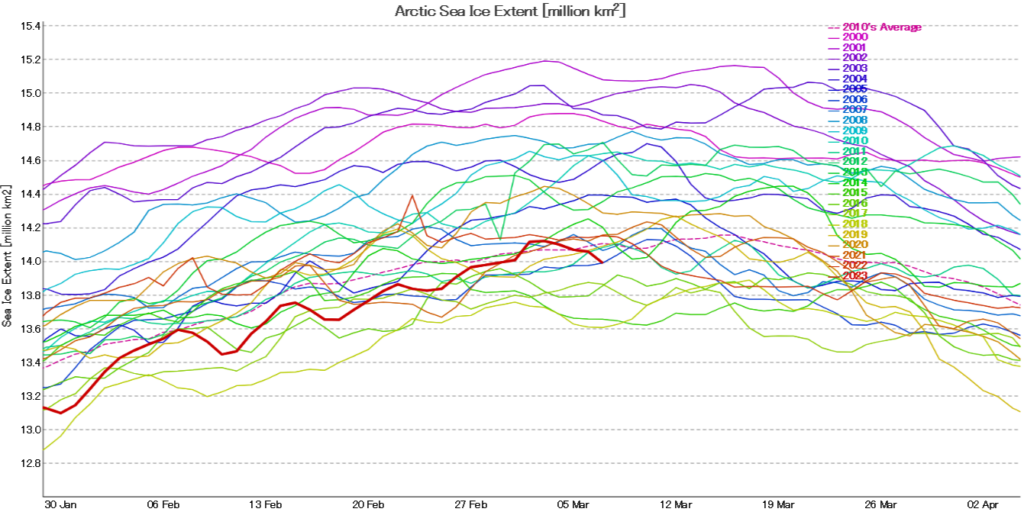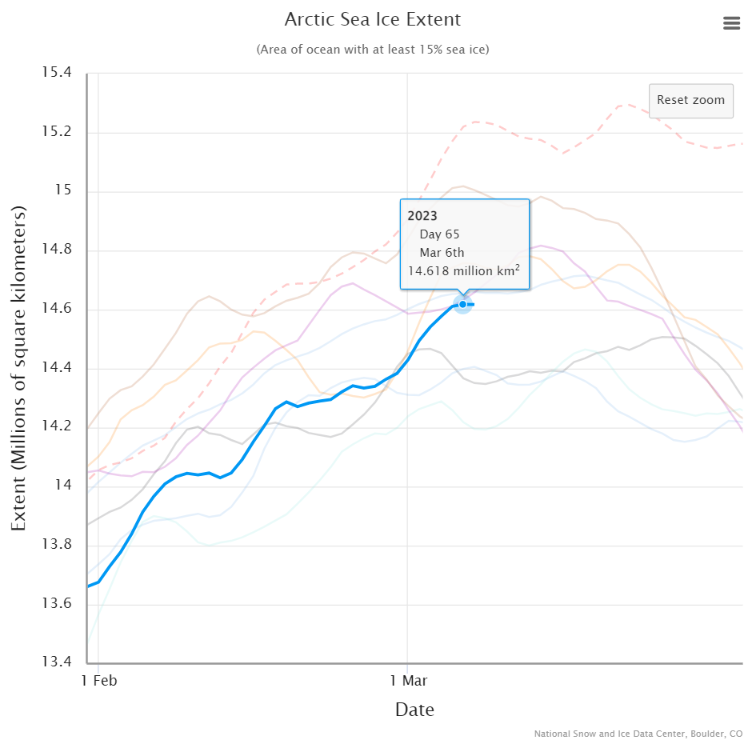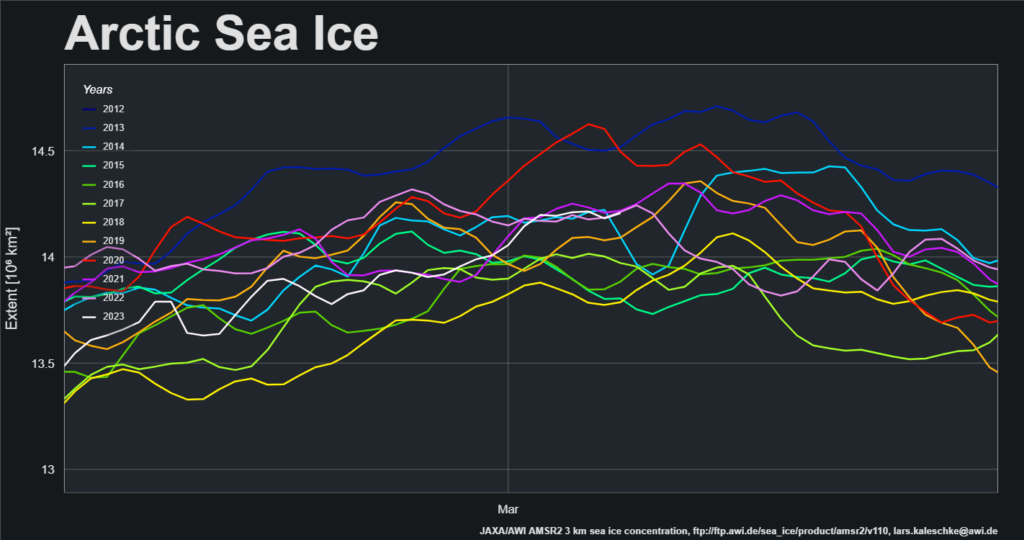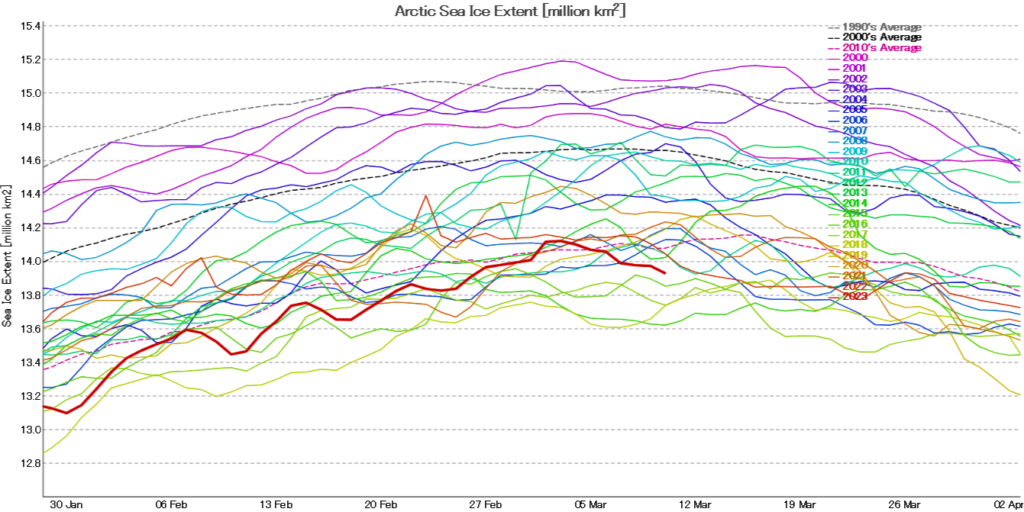March has arrived, so it’s time to start taking a serious look at where and when the 2023 maximum Arctic sea ice extent will occur.
To start with here’s Zack Labe’s overview of previous years’ maxima:

Zack’s graph displays the JAXA/ViSHOP version of Arctic extent, so here too is JAXA’s own graph of the current sea ice extent:

It doesn’t look as though the 2023 maximum has been achieved yet, but extent on March 1st was 14.01 million km². That is evidently not going to be the lowest in the satellite era!
As Tom has already mentioned below, JAXA extent has declined significantly since the (so far!) peak extent of 14.12 million km² on both the 2nd and 3rd of March:

It’s too soon to be certain of course, but we certainly now have a good candidate for the 2023 maximum JAXA extent.
NSIDC 5 day averaged extent is still increasing, but let’s see what this afternoon’s update (UTC) reveals…

Which is a decrease of 0.001 million km² from March 6th, leaving a current NSIDC maximum extent of 14.62 million km²!
Finally, for the moment at least, AWI’s “high resolution” AMSR2 extent looks a lot less convincing than JAXA’s:

NSIDC Arctic sea ice extent took a tumble yesterday, so with only mild trepidation I’m calling the 2023 maximum extent. In the case of the NSIDC’s 5 day average metric that’s still a rounded up 14.62 million km² on March 6th:

The JAXA/ViSHOP maximum extent remains at 14.12 million km² on March 2nd:

The “high resolution” AMSR2 based metric from AWI peaked at 14.24 million km² on March 5th:

Watch this space!


